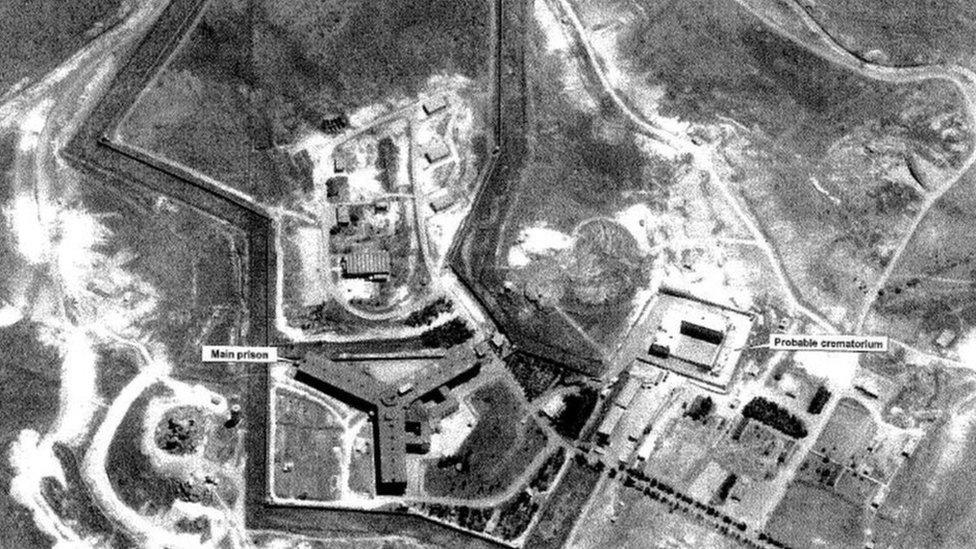Saydnaya Prison: Mapping the Assads' 'human slaughterhouse'
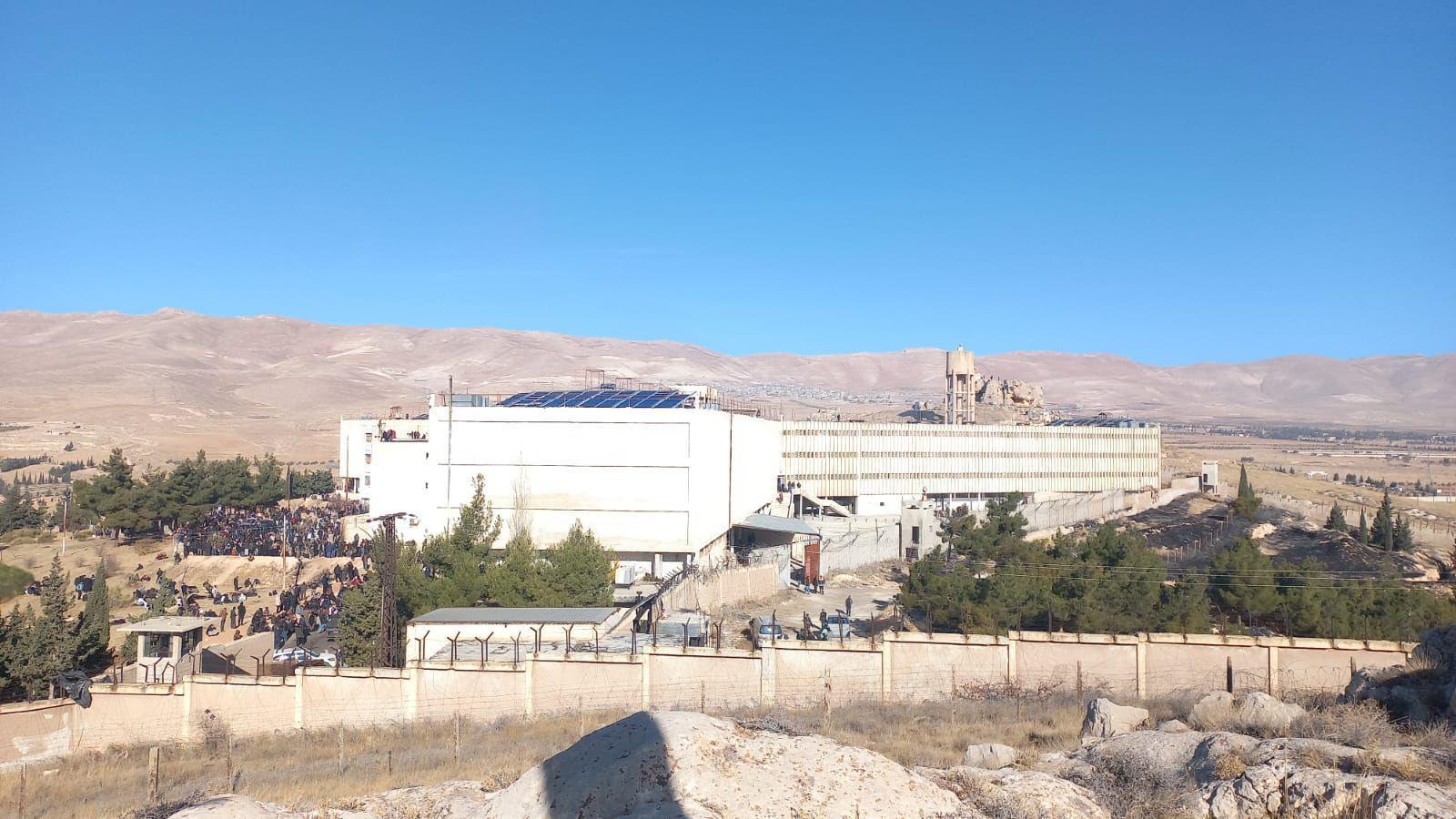
The Saydnaya Prison pictured on Monday morning by the White Helmets - a Syrian civil defence organisation
- Published
Since the collapse of the Assad regime on Sunday, Syrian civilians hoping for news of their relatives have been flocking towards the country's most secretive and notorious prison, Saydnaya.
Established in the early 1980s in a small town about 30km (19 miles) north of the capital Damascus, Saydnaya is where the Assad family has held opponents of their regime for decades.
Referred to as a "human slaughterhouse" by rights groups, external, thousands of people are said to have been detained, tortured and executed at the prison since the Syrian civil war began in 2011.
The layout of Saydnaya has been a closely guarded secret and images from inside the prison have never been seen before.
Details of the prison's layout can only be established based on interviews with former guards and detainees.
But information from rights groups and the US State Department have offered an insight into the building which became a powerful symbol of the Assads' brutal and repressive rule.
A sprawling 'slaughterhouse'
Saydnaya was for decades administered by the Syrian military police and military intelligence, with construction beginning in the early 1980s. The first detainees arrived at the 1.4 sq km facility in 1987 - 16 years into the rule of President Hafeez al-Assad, Bashar's father.
Once fully operational the prison contained two main detention facilities. The White Building was, according to rights groups, mainly built to hold military officers and troops suspected of being disloyal to the regime. It was an L-shaped complex in the south-east of the sprawling complex.
The Red Building - the main prison - was for opponents of the regime, initially comprising those suspected of membership of Islamist groups. This wing was noted for its distinctive Y-shape, with three straight corridors spreading out from a central hub.
Around 10,000-20,000 people could be housed between the two buildings, according to rights groups that have spoken to released prisoners. Videos circulating online since Sunday - which have been authenticated by BBC Verify - showed a large surveillance room in the prison filled with CCTV screens showing what appeared to be dozens of prison cells.
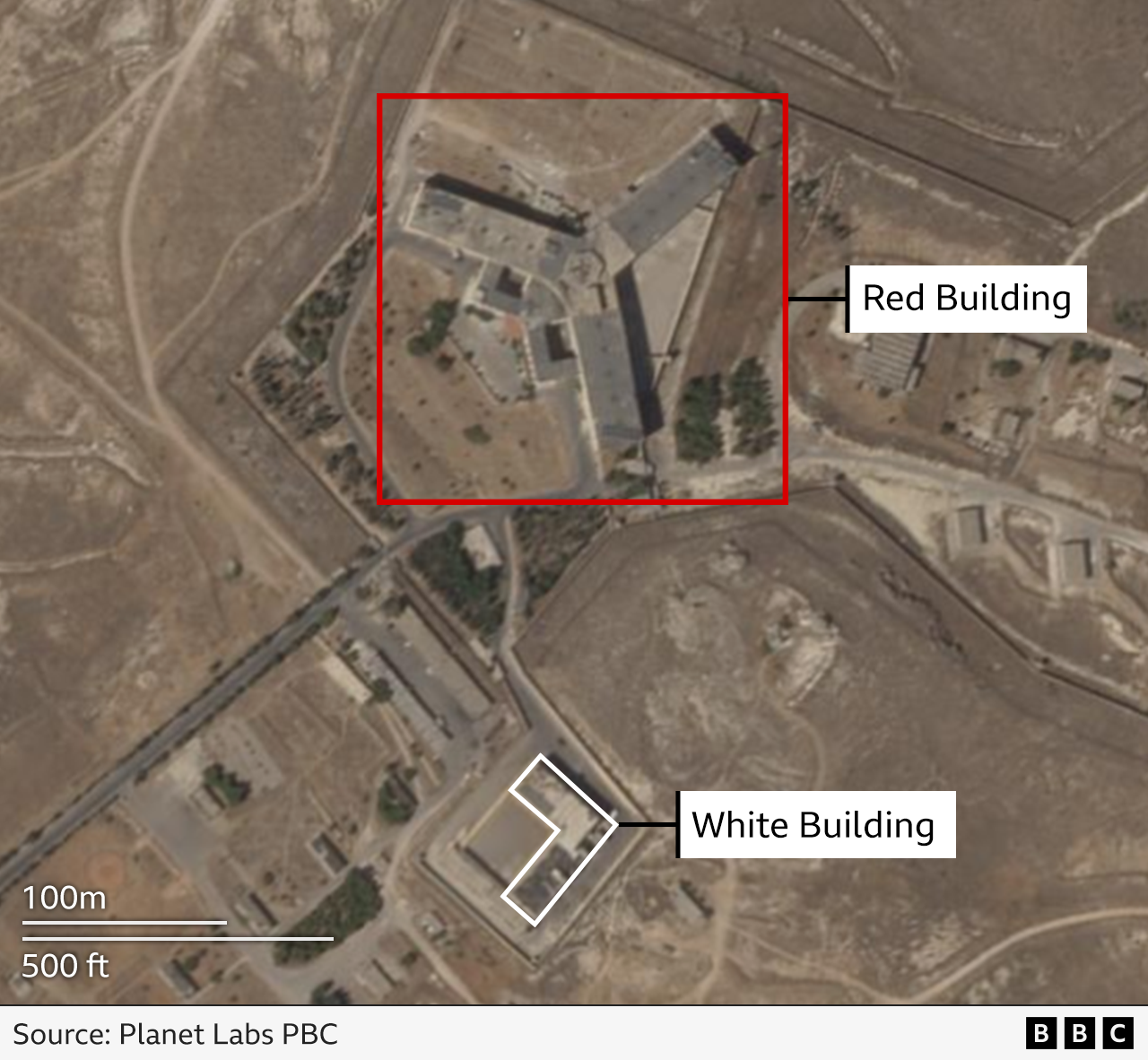
A 2017 report by Amnesty International citing ex-guards at the prison found that after the Syrian civil war began in 2011 the White Building was emptied of existing prisoners, and prepared instead to house those detained for taking part in protests opposing President Bashar al-Assad's regime.
One former officer told Amnesty that "after 2011, [Saydnaya] became the main political prison in Syria".
The organisation also quoted testimony from former prisoners claiming that those held in the Red Building were frequently exposed to various methods of torture, including severe beatings, rape and denial of access to food and medicine.
Housed beneath the White Building is what those speaking to Amnesty called an "execution room", where detainees in the Red Building would be transported to be hanged.
A former guard said that a list of those to be executed from the Red Building would arrive at lunchtime. Troops would then take those marked for death to a basement holding cell - which could sometimes contain up to 100 people - where they were subjected to beatings.
Prisoners who spoke to Amnesty said detainees in the Red Building were typically "transferred" from the building in the dead of night - usually between midnight and 03:00.
Blindfolded detainees were then led down a flight of stairs into the "execution room" in the south-east section of the White Building, before being led up onto a one metre-high platform with 10 nooses from which they were hanged.
According to Amnesty, in 2012 the room was expanded, with a second platform with 20 more nooses. In footage shared by rebel-affiliated media after the fall of the regime, fighters displayed dozens of nooses they found in rooms around Saydnaya.
It is estimated by rights groups that more than 30,000 detainees had either been executed or died as a result of torture, lack of medical care or starvation between 2011 and 2018. Citing accounts from the few released inmates, at least another 500 detainees had been executed between 2018 and 2021, the Association of the Missing and Detainees in Saydnaya Prison (AMDSP) said in 2022.
In 2017, the US State Department claimed that authorities had constructed a possible crematorium on the site to dispose of the remains of murdered prisoners. In the images below, a small wing can be seen adjoining the White Building.
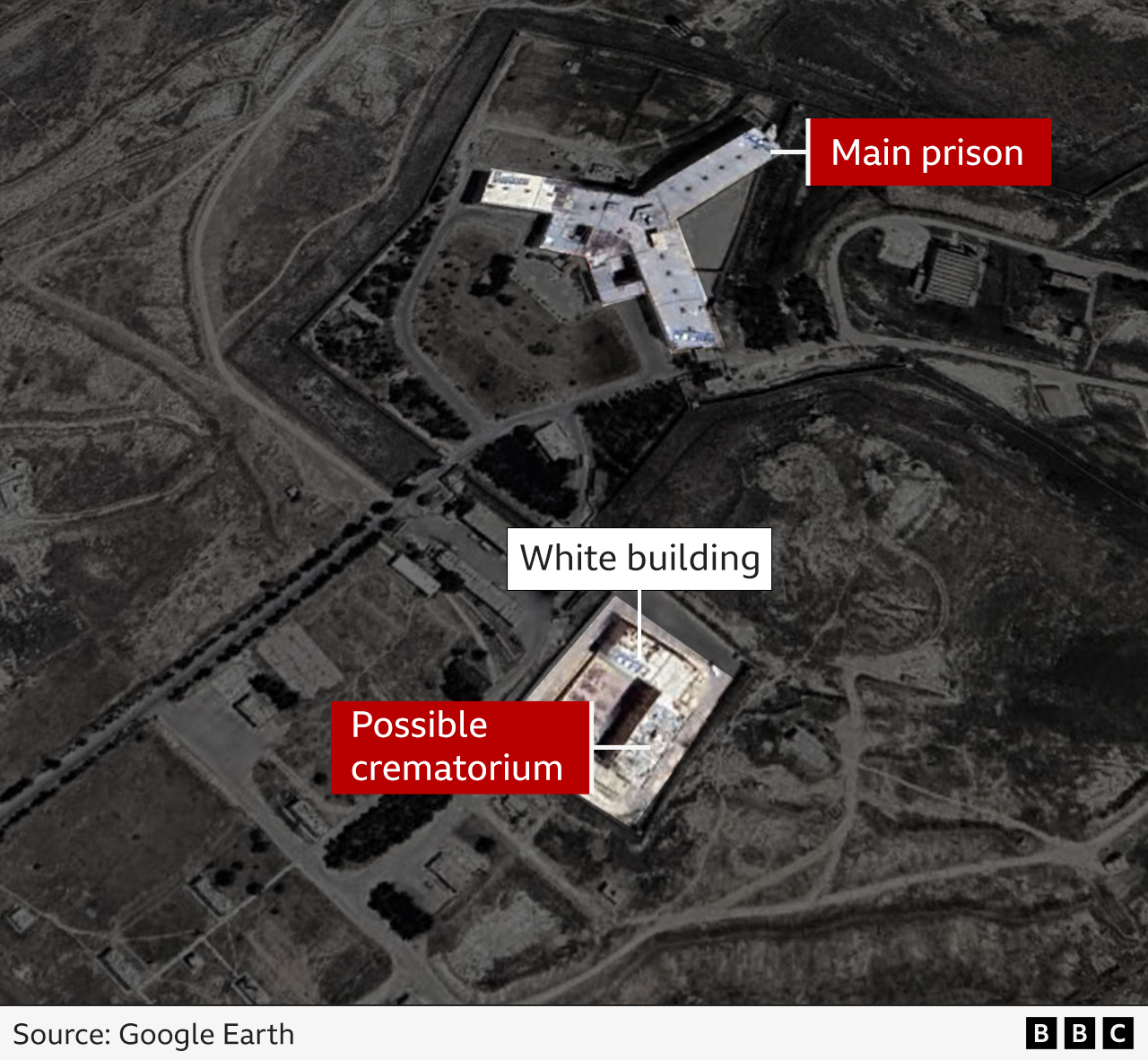
A State Department spokesperson said officials had built the facility as part of "an effort to cover up the extent of mass murders taking place in Saydnaya prison".
Satellite images released by US investigators showed a structure which they said was a small building converted into a crematorium. Officials said snow melt on the roof of the building helped to back up their claims - adding that at least 50 prisoners a day were being hanged at the facility at the time.
Intense security surrounded the complex
Throughout its history, the facility was heavily guarded, with fortifications surrounding the grounds.
The exterior of the prison was patrolled by a detachment of 200 troops from the military, with an additional 250 soldiers from military intelligence and the military police responsible for interior security, according to the 2022 report from AMDSP.
Troops from the 21st Brigade of the army's Third Division were chosen to defend the prison because of their strong loyalty to the regime. Soldiers were commanded by officers from President Bashar al-Assad's Alawite minority.
Since the downfall of the Assad regime, civilians have been urged to avoid rushing through the perimeter of the prison. Rights groups say the exterior of the complex is known to be heavily mined. A ring of anti-tank munitions runs around the exterior of the prison, with a secondary ring of anti-personnel mines running through the centre of the facility.
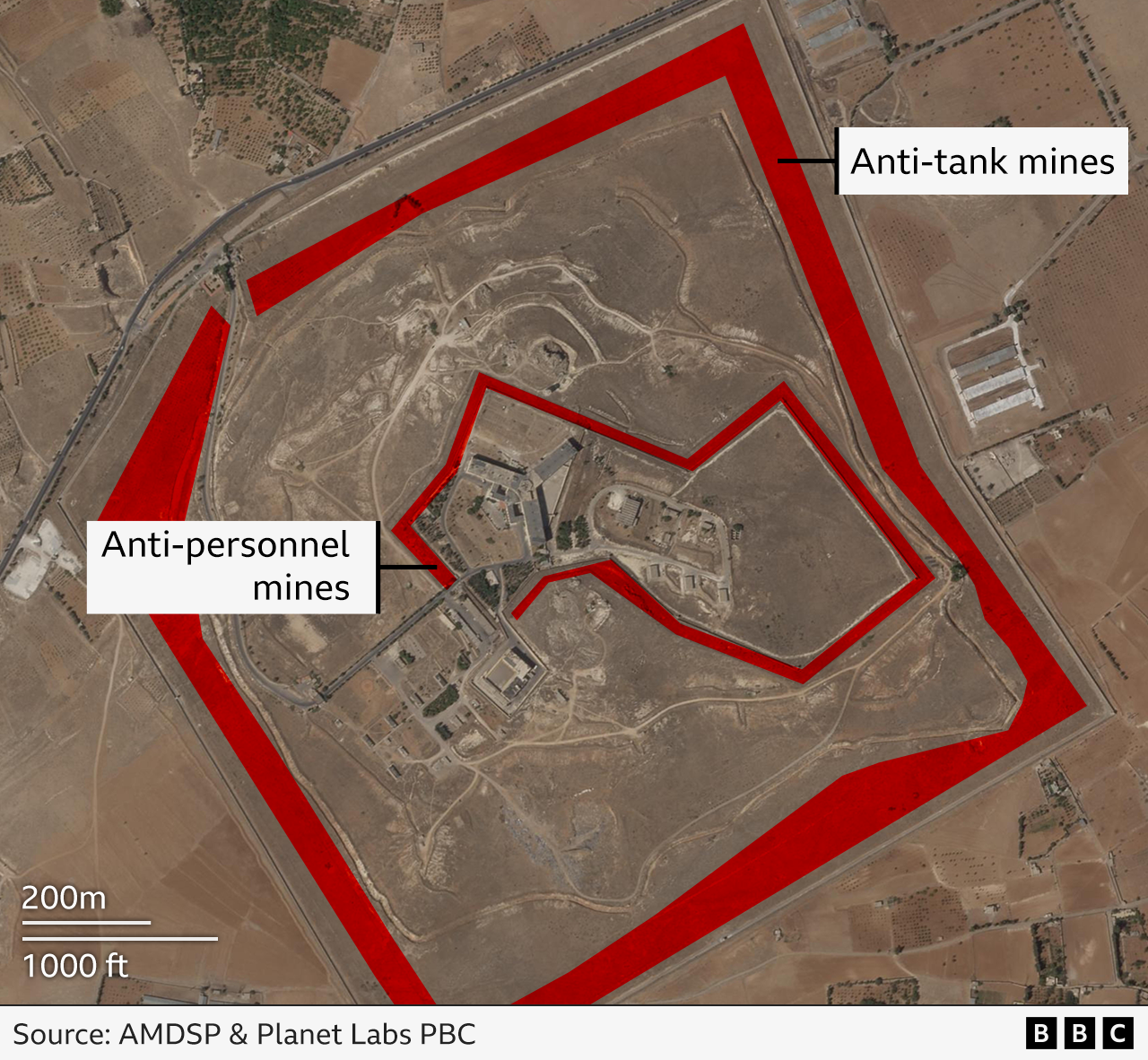
Images released by the White Helmets - a Syrian civil defence group - showed high walls topped with barbed wire also surrounding the complex. Guard towers can also be seen dotted around the facility.
The Assad regime always denied the accusations levelled against it by international organisations, calling them "baseless" and "devoid of truth".
Amnesty says for families who suspect their relatives have been held in Saydnaya the fall of the regime "raises the prospect that they could finally discover the fate of their missing loved ones, in some cases decades later".
Related topics
- Published9 December 2024
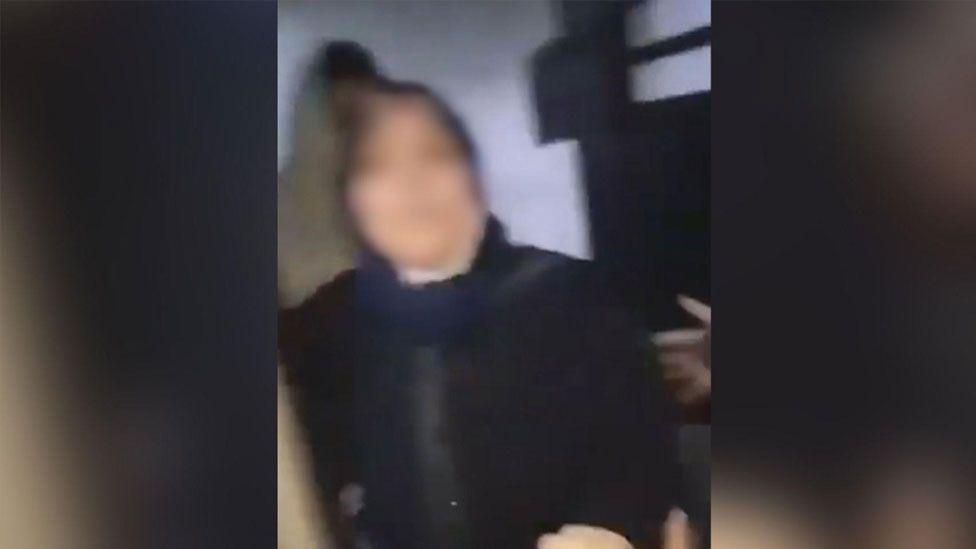
- Published8 December 2024
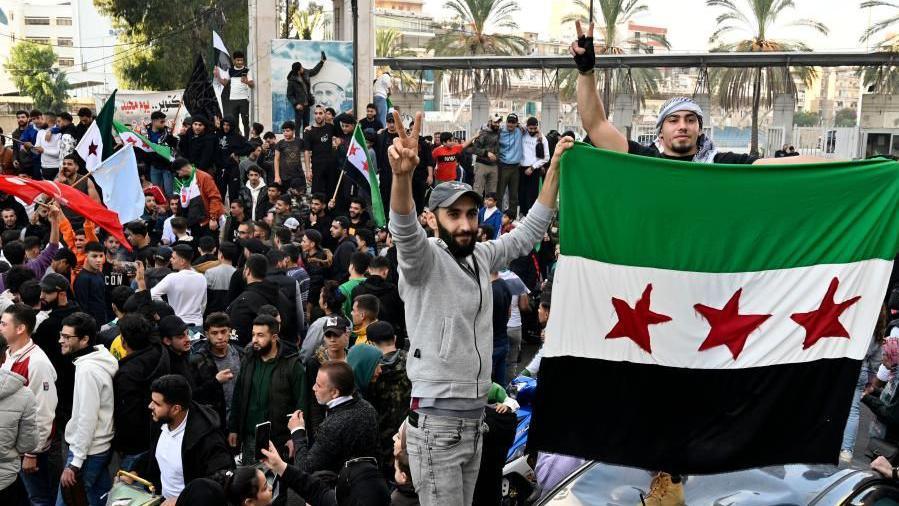
- Published15 May 2017
